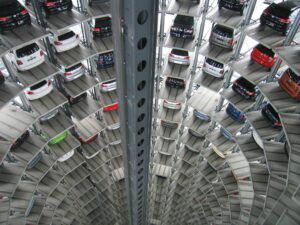Introduction:
Car ownership comes with its share of risks. From unexpected accidents to natural calamities, unforeseen events can lead to significant financial losses for vehicle owners. In India, while third-party car insurance is mandatory for legal operation on the roads, standalone own damage (OD) insurance provides an additional layer of protection for your vehicle. In this comprehensive guide, we’ll explore everything you need to know about standalone own damage car insurance, its coverage, benefits, exclusions, and more.

Understanding Standalone Own Damage Car Insurance:
Standalone own damage car insurance is a type of insurance policy that provides coverage for damages to your own vehicle. Unlike third-party insurance, which covers damages to third-party vehicles and property, standalone OD insurance focuses on protecting your own car from various perils.
Coverage Offered:
Standalone own damage insurance typically covers the following:
1. Accidental Damages: Protection against damages caused by accidents, including collisions and crashes.
2. Theft:Coverage for theft or attempted theft of the insured vehicle.
3. Natural Calamities:Compensation for damages resulting from natural disasters such as floods, earthquakes, or landslides.
4. Fire and Other Perils: Reimbursement for damages caused by fire, lightning, explosion, or self-ignition.
Benefits of Standalone Own Damage Insurance:
Investing in standalone own damage car insurance offers several benefits, including:
1. Comprehensive Protection: Provides coverage for damages to your own vehicle, offering financial security in case of unforeseen events.
2. Customizable Coverage:Add-on options allow you to tailor your insurance policy according to your specific needs, enhancing your protection.
3. Peace of Mind: Knowing that your vehicle is protected against a wide range of risks can provide peace of mind and alleviate financial stress.
4. Ease of Claim Process: Modern insurance providers offer streamlined claim processes, making it easier and quicker to file and process claims in case of damages.

Add-On Options:
To enhance your coverage, standalone own damage insurance policies often offer various add-on options. Some common add-ons include:
1. Zero Depreciation Cover: Ensures that you receive the full value of your vehicle without factoring in depreciation during claim settlements.
2. Consumables Cover: Covers the cost of consumable items such as engine oil, nuts, and bolts, which are not typically covered under standard insurance policies.
3. Return-to-Invoice Cover:Provides reimbursement of the original invoice price of the vehicle in case of total loss or theft.
4. Roadside Assistance Cover: Offers assistance services such as towing, flat tire replacement, and battery jump-start in case of vehicle breakdowns.
Exclusions to Coverage:
While standalone own damage insurance provides comprehensive protection, certain exclusions may apply. Common exclusions include:
1. Third-Party Liability: Own damage insurance covers losses to your own vehicle and does not extend to damages caused to third-party vehicles or property.
2. Specific Conditions: Claims made under certain conditions, such as driving without a valid license or under the influence of alcohol, may not be covered.
3. Owner’s Negligence:Damages resulting from the owner’s negligence, such as improper maintenance or reckless driving, may not be covered.
4. War or Nuclear Damage:Damages resulting from war, nuclear accidents, or acts of terrorism are typically excluded from coverage.
5. General Wear and Tear: Normal wear and tear of the vehicle over time is not covered under standalone own damage insurance.

Who Should Consider Own Damage Insurance?
Standalone own damage insurance is recommended for:
1. Vehicle Owners: Owners of cars, bikes, or other vehicles seeking comprehensive protection against damages.
2. Those with Third-Party Insurance:Individuals who already have third-party insurance and want to enhance their coverage.
3. High-Value Vehicles: Owners of high-value vehicles who want to safeguard their significant investment against potential risks.
4. Frequent Travelers: Individuals who frequently travel long distances or reside in areas prone to natural disasters or theft.
Calculating Your Premium:
The premium for standalone own damage insurance is calculated based on various factors, including:
1. Vehicle Age and Model:Older vehicles or models with higher market values may have higher premiums.
2. Location: The city or area where the vehicle is registered can impact the premium due to factors like traffic density and crime rates.
3. Insured Declared Value (IDV): The IDV represents the maximum sum insured in case of total loss or theft of the vehicle and affects the premium amount.
4. Fuel Type: The type of fuel used by the vehicle (petrol, diesel, or CNG) can influence the premium rate.
Insurance providers often offer online tools such as premium calculators to help individuals estimate their insurance premium based on these factors.
Conclusion:
Standalone own damage car insurance provides essential protection for vehicle owners against a wide range of risks. By understanding the coverage, benefits, add-on options, and exclusions, individuals can make informed decisions when selecting an insurance policy that meets their needs. Whether you’re a new car owner or looking to enhance your existing coverage, standalone own damage insurance offers peace of mind and financial security in the face of uncertainty.